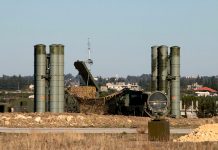
The U.S. Navy has recently identified concerns regarding inadequate welds in its latest Virginia-class submarines, specifically the Hyman G. Rickover and the New Jersey. Additionally, the aircraft carrier George Washington has exhibited similar welding deficiencies following its recent overhaul. However, the Navy has clarified that these weld issues do not jeopardize the safety or operational readiness of the vessels.
In correspondence with the House Armed Services Committee, Navy Secretary Carlos Del Toro disclosed that the welding complications affected not only the aircraft carrier but also the newly constructed submarines. Investigations have revealed that these deficiencies resulted from welders not adhering to established protocols. Despite this, Del Toro confirmed that naval experts have assessed the welds and determined that they do not pose a threat to critical systems, ensuring the vessels remain safe for operation. Del Toro became aware of the issue on September 24, and investigations are currently underway regarding welds on an additional 23 ships in construction or maintenance.
HII, the parent organization of Newport News Shipbuilding, acknowledged that certain welders deviated from prescribed welding standards during their work on these military vessels but emphasized that there was no intent to circumvent protocols. HII has taken immediate steps to notify clients and regulators and is collaborating with the Navy to rectify the situation. The Department of Justice has initiated an investigation, and Secretary Del Toro has expressed a commitment to fully cooperate as the Navy explores all legal avenues. Meanwhile, Congress is actively seeking comprehensive information regarding the scope of the issue.
In a potentially related development, the Department of Defense recently awarded a significant contract worth nearly $244 million to General Dynamics Electric Boat Corp. for the provision of spare parts and specialized materials for Virginia-class submarines.
The discovery of substandard welds, while not affecting critical systems, has ignited crucial discussions surrounding the long-term integrity and functionality of these submarines. Naval experts have reassured stakeholders that the overall mission capability and structural integrity of the submarines remain intact. Technical assessments from Naval Sea Systems Command (NAVSEA) have verified that there is no immediate risk to crew safety or submarine operations.
However, these defects pose a potential risk for accelerated wear and structural vulnerabilities over time. Even non-essential welds may affect hull stability when subjected to high pressures and extreme underwater conditions. If not addressed, these issues could escalate maintenance costs and necessitate earlier repair interventions. The Navy is proactively inspecting an additional 23 ships to ensure that such defects do not compromise the fleet’s long-term functionality and durability.
Virginia-class submarines serve as a critical component of the U.S. Navy’s arsenal, noted for their advanced technology and versatility. With a displacement of approximately 7,800 tons and a length of around 115 meters, these submarines offer exceptional flexibility and stealth. They are powered by a reactor designed to operate without refueling throughout the vessel’s service life, enabling an unlimited operational range. Capable of reaching speeds up to 25 knots and diving to depths beyond 240 meters, they are armed with torpedoes and Tomahawk cruise missiles, allowing them to engage both land and maritime targets effectively.
The U.S. defense structure relies heavily on Virginia-class submarines due to their stealth and diverse mission capabilities across the world’s oceans. Their design allows for operations in various maritime environments, making them valuable assets in a multitude of military scenarios. These submarines play key roles in reconnaissance, electronic warfare, and supporting special forces’ amphibious operations. Their strategic importance is particularly relevant in regions like the Pacific Ocean and the Arctic, where geopolitical tensions are rising.
Virginia-class submarines are capable of executing a wide range of missions, from traditional naval engagements to modern roles such as cyber warfare and underwater intelligence gathering. They are also critical in supporting special operations, with the capacity to transport and deploy Navy SEALs into hostile environments. Their adaptability and technological sophistication are vital in maintaining U.S. military superiority and providing a robust defense in an increasingly complex global landscape.
Historical precedents highlight instances where inadequate welds on naval vessels have impacted their combat readiness and performance. A notable example is the USS Swordfish (SSN-579), which experienced weld issues during the 1970s. Defects found during inspections forced the submarine into temporary inactivity and required significant repairs to restore safety and operational effectiveness. Although no serious incidents occurred, the situation prompted criticism regarding the quality control measures of that time.
Similarly, the aircraft carrier USS Carl Vinson (CVN-70) encountered welding deficiencies shortly after its commissioning in 1985, affecting structural components and resulting in costly repairs. While these incidents did not lead to catastrophic failures, they revealed weaknesses in the shipyard’s quality assurance protocols, ultimately leading to the implementation of stricter regulations and oversight of welding practices in subsequent years. These historical cases underscore the necessity for rigorous standards in shipbuilding, particularly for vessels of strategic significance.




